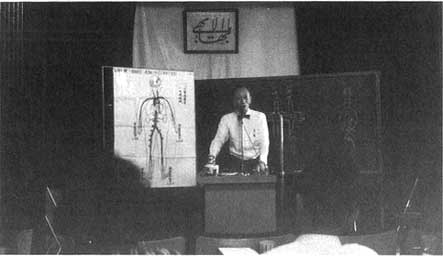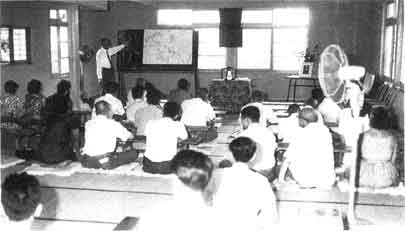
|
Traces That Remain:
A Pictorial History of the Early Days of the Bahá'í Faith among the Japanese
by Barbara R. Sims
edited by Sheridan Sims  |
chapter 72 | start page | single page | chapter 74 |  |
Chapter 73


click here for larger image
Dr. Ikuo Mizuno, who lived in Yokohama, liked to use charts to accompany his talks. As he was a surgeon, he thought it fitting to explain Bahá'í administration in terms of the body (top photograph). This was
during a summer school in 1961.In the bottom photograph at another summer school at Takarazuka in 1963 he is explaining Bahá'u'lláh's journey from Iran to the Holy Land.
As Dr. Mizuno had a traditional education and knew the more classical style of Japanese, he undertook to translate the "Kitab-i-Iqan" into Japanese. It took him two years, working on it every night after coming home from his professional duties at the hospital. At that time he was living alone as his wife had died. After he retired, he went to Kyoto to live with his son, who was also a doctor.
Dr. Mizuno was a member of the national spiritual assembly for many years and was appointed as Auxiliary Board Member for Protection in 1976. He served in that capacity until his death at age ninety-one, in 1986.
 |
chapter 72 | start page | single page | chapter 74 |  |
|
|